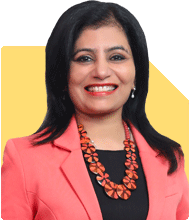Hello Nikunj, Hope you are doing good. My current age 35, I am planning to invest as SIP 60K monthly for 15 years. My goal is 2 crore after 15 years. Below are the schemes I choose. Kindly review and suggest changes if any
Midcap Fund
Motilal Oswal Midcap Fund Direct-Growth 4K,
Mahindra Manulife Mid Cap Fund Direct - Growth 4K,
Smallcap Fund
Axis small cap direct growth 4k,
Canara robecco small cap 4K,
quant small cap 4K,
Nippon small cap 4K,
Mid and Largecap
Mirae Asset Emerging Bluechip fund 4K,
Axis Growth Opportunities Fund Direct - Growth 4K,
Multicap
Mahindra Manulife Multi Cap Fund Direct - Growth 4K,
HDFC Multi-Cap Fund Direct - Growth - 4K,
Mirae Asset Multicap Fund Direct - Growth 4k,
Canara Robeco Multi Cap Fund Direct - Growth 4K,
Flexi
Parag Parikh Flexi Cap Fund Direct-Growth 4K,
Quant Flexi Cap Fund Direct-Growth 4K,
Value
Tata Equity PE Fund Direct-Growth - 4K
Ans: Hello Nikunj, hope you are doing well. Your investment plan is ambitious and well thought out. Investing ?60,000 monthly with a goal of ?2 crore in 15 years is achievable with a strategic approach.
Current Scheme Selection
You have chosen a diverse mix of midcap, smallcap, mid and largecap, multicap, flexicap, and value funds. This diversification is commendable as it spreads risk across various segments of the market.
Analysis of Current Portfolio
Midcap Funds: These funds offer substantial growth potential but come with higher risk. Your allocation here is balanced.
Smallcap Funds: Smallcaps can yield high returns but are volatile. A ?24,000 allocation is quite aggressive.
Mid and Largecap Funds: These funds provide a balance of stability and growth, which is essential for a long-term portfolio.
Multicap Funds: These funds invest across various market caps, offering diversification within a single fund.
Flexicap Funds: Flexicap funds are versatile and can adapt to market conditions, offering both growth and stability.
Value Funds: These funds invest in undervalued stocks, aiming for long-term growth.
Recommendations for Adjustment
Your portfolio has a strong base, but some adjustments can enhance its performance and stability.
Reduce Smallcap Exposure
Smallcap funds are volatile and carry higher risk. Reducing your exposure slightly can help balance risk and return.
Increase Flexicap and Multicap Allocation
Flexicap and multicap funds offer better diversification and can adjust to market conditions. Increasing their allocation can enhance stability.
Consider Adding a Balanced Advantage Fund
Balanced Advantage Funds (BAFs) adjust their equity and debt allocation based on market conditions. This can provide a cushion during market downturns.
Regular Portfolio Review
Review your portfolio every 6-12 months. This ensures your investments stay aligned with your goals and market conditions.
Disadvantages of Direct Investing
Lack of Professional Guidance
Direct investing in mutual funds without a Certified Financial Planner (CFP) can lead to suboptimal fund selection and allocation.
Emotional Decision-Making
Investors often make emotional decisions during market fluctuations, leading to potential losses.
Time-Consuming
Managing a portfolio requires time and expertise. A CFP can save you time and provide professional insights.
Complexity in Tax Management
Managing taxes on your investments can be complex. A CFP can help optimize tax strategies, ensuring you retain more of your returns.
Importance of Certified Financial Planner (CFP)
A CFP can provide personalized advice, aligning your investments with your financial goals and risk tolerance. They can help you navigate market volatility and make informed decisions.
Strategic Steps to Achieve Your Goal
Increase SIP Annually
Increase your SIP contributions by 10% every six months. This leverages the power of compounding and inflation-adjusted growth.
Emergency Fund
Maintain an emergency fund to cover 6-12 months of expenses. This ensures you don't withdraw from your investments during emergencies.
Diversify Across Asset Classes
While mutual funds are great, consider diversifying into other asset classes like debt funds or international funds for global exposure.
Stay Disciplined
Stick to your investment plan. Avoid reacting to short-term market movements. Consistency is key to long-term wealth creation.
Conclusion
Your goal of ?2 crore in 15 years is achievable with strategic adjustments and disciplined investing. Consider reducing smallcap exposure, increasing flexicap and multicap allocations, and consulting a CFP for professional guidance.
Final Note
Your commitment to a well-planned SIP strategy is commendable. With regular reviews and adjustments, you are on the right path to achieving your financial goals.
Best Regards,
K. Ramalingam, MBA, CFP,
Chief Financial Planner,
www.holisticinvestment.in

























